FIND OUT MORE
Do you want to know about 4PS Construct – our integrated and all-in-one construction ERP? Download our brochure or book a demo today.


The construction sector is in transition. Sustainability, digitisation and cost control are high on the agenda. But without a future-proof IT strategy, construction companies risk inefficiency and failure costs. As an IT manager, you are the key to turning these challenges into opportunities. How can you set up your IT processes in such a way that you directly strengthen construction projects? This article lists the most important areas for improvement.
ERP systems are at the heart of many construction companies, but they are also often a bottleneck. Long response times, poor integrations and error-prone workflows can shut down projects.
Advice:
The reality? Inconsistent versions of construction drawings and miscommunication between the office and the construction site cause delays. As a result, errors and poor communication are also known causes of failure costs.
Tackle it immediately:
BIM only delivers real value when all tools communicate seamlessly with each other. Inadequate data flows between BIM software and other systems lead to loss of crucial insights.
Optimisations:
Equipment that is untraceable or requires unscheduled maintenance can unnecessarily delay projects.
Action points:
AI helps construction companies predict risks and reduce failure costs. Think of tools that automatically tell you when to place orders or detect deviations in schedules even before a project threatens to stall.
Quick win:
The construction industry is becoming increasingly strictly regulated in terms of CO2 emissions and material consumption, in addition, the vast majority of industry participants are subject to a reporting obligation via the CSRD. IT can accelerate in this by bringing all data on emissions and usage together in one overview.
Read more about data collection for the CSRD in this blog: Collecting data for the CSRD: start your preparation!
Quick win:
Multiple separate systems with their own data silos slow down decision-making and lead to misunderstandings.
Approach:
Pro-tip:
Start small: for example, by setting up project administration centrally and rolling it out step by step to other departments.
IT teams also face capacity shortages. As operational tasks pile up, strategic work is compromised.
Solutions that work:
The success of digitisation hinges on cooperation between IT and project teams. Introducing new tools only works if users are involved in the process.
Approach:
Do you want your construction company to remain at the forefront of a competitive market? Then the IT department is not just a support service, but a strategic building block.
Three actions you can start taking right away:
Construction is digitising at a rapid pace. IT is driving that transformation. Make sure your team is ready to take on that role.
Do you want to know about 4PS Construct – our integrated and all-in-one construction ERP? Download our brochure or book a demo today.
Please fill in your name and E-mail to download this file.